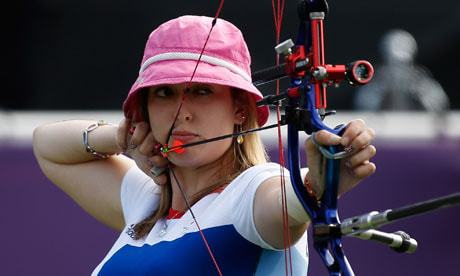|
Disabled. The misconceptions that come with this word vary, and it’s fair to say that every disabled person has been treated differently because of their disability. We’ve all faced some degree of pity, social exclusion, or labelled as an inspiration simply for getting through the day. Worst of all are the assumptions on our ability, writing perfectly capable people off without giving them a chance because of a false understanding of what it means to be disabled. The law sets out equal access to opportunity, but alone it is not enough. Alone it does not have the power to ensure that every person living with a disability can thrive and reach their full potential. To do this we need to change something altogether more difficult - we need to change the way we see disability. And it is this mindset that the Paralympics has made some positive inroads in changing. Officially kicking off in 1960 in Rome with 400 athletes from 23 countries, the first Games set the precedent for the event we know today. From these humble beginnings, the Paralympic movement has grown in size and stature, and is now the second largest multisport event in the world. In Tokyo over 4,400 athletes are set to compete in 540 events across 22 different sports, and we can expect to be treated to breathtaking performances, spectacular sportsmanship, stunning comebacks, and the epic disappointments that we know and love about sport. If the Olympics highlights the pinnacle of human performance, the Paralympics showcases the height of human adaptability. It displays ability in the rawest form, demonstrating what a person can do rather than what they can’t. And this is where its true power lies: the capacity to shift the way we see, think, feel and believe. It overhauls limitations, challenges perceptions, and exhibits endless possibilities. The Paralympics is more than just a collective movement; it’s also about the individual people within it. To look at a role model and see yourself represented in them can have a powerful impact on the way we think about ourselves. To see disability in a different way can change outdated beliefs that impact the way we treat others. Shining a spotlight on brilliant achievers can spark conversations in other areas, encouraging more disabled people to be placed in decision-making roles and have a voice on matters that affect us all. I’m sad to say that I wasn’t able to name a single Paralympian when I was growing up, and it’s been fantastic to see the likes of Hannah Cockroft, Johnny Peacock and Ellie Simmonds become household names over the past decade. Their elevated profile lets us get an insight into their journeys, following the ups, the downs, the incredible hard work that goes into making the team, and the experiences that ultimately make them so very human. Sharing stories of athletes who are inspiring because of their achievements, rather than simply because they happen to live with a disability is an essential part of this, and it is beautiful when we see it unfold. It’s hard to believe that London 2012 was nine years ago, which, for me, is the event where the Paralympic movement really started to steamroll ahead. The evidence speaks for itself, and it’s something I see reflected in my own personal experiences. After winning gold in Beijing 2008 I had two media interviews, after winning in London 2012 I had two whole days filled with back-to-back interviews. Same outcome (I actually performed better in Beijing), but the difference came from how it was positioned as a high-profile sporting event from concept to completion. This was seen in build-up work that integrated both the Olympics and Paralympics on the same playing field, commercial partnerships, and the media coverage that broke down things like classification categories and equipment adaptations. Education is essential to creating greater understanding around tricky topics that we might not ordinarily get much exposure to, and through sport we can create conversations that help normalise disability. London 2012 invested in this message and it worked. The appetite was there, and it was good to see this support continuing through to Rio 2016. As athletes take their positions on the start line at Tokyo 2020, more heroes will be made. More conversations will be had, and disability will once again form part of our conscious thoughts. Sport is a catalyst for change. We’ve seen this in action in the Olympics recently, which has brought important conversations about mental health to the fore. The Paralympics has a long legacy of challenging the inequalities that disabled people across the world face, continuing to push for parity and equal opportunity. Change has not happened quickly and we still have a long way to go, but it is important to recognise the contribution that the Games has made to breaking down some of these barriers. 61 years of the Paralympic Games has lit a beacon of hope. The fledgling movement has snowballed and transformed into a recognisable brand that is underpinned by its values: determination, equality, inspiration and courage. There are still a great many things that need to be done to gain greater recognition for both para sports and the athletes within them, rather than just hearing about them every two years when a Games is held. But this is a movement still in the early stages of its journey, and the momentum it has built over the last six decades will continue to push forwards.
0 Comments
Leave a Reply. |
Details
Categories
All
|
|
Contact Danielle at [email protected]
|


 RSS Feed
RSS Feed